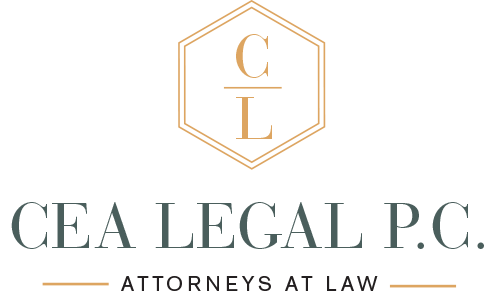Intellectual Property Protections in the United States
Intellectual property (IP) protections in the United States are primarily governed by federal laws and regulations. Here is an outline of the main forms of intellectual property protections available:
1. Patents:
Utility Patents: Granted for novel and useful inventions, including processes, machines, compositions of matter, and certain types of plants.
Utility patents are the most common and are grouped into five categories: a process, a machine, a manufacture, a composition of matter, or an improvement of an existing idea. A utility patent is valid for 20 years from the application date.
Design Patents: Granted for new, original, and ornamental designs of functional items, it lasts for 14 years.
Plant Patents: Granted for distinct and new varieties of plants that are asexually reproduced, it lasts for 20 years.
2. Copyrights:
Protect original works of authorship, including literary, artistic, musical, and dramatic works, as well as software, architecture, and other creative expressions.
Automatic protection upon creation and fixation in a tangible medium.
Registration with the U.S. Copyright Office provides the following additional benefits:
- Public Record: Registration creates a public record of your copyright claim. This record serves as prima facie evidence of the validity of your copyright and the facts stated in the registration certificate. It can be helpful in legal disputes or if you need to prove ownership.
- Lawsuit Eligibility: You must have a registered copyright or a pending registration to file a lawsuit for copyright infringement in the United States. Registering your work allows you to pursue legal action and seek remedies such as damages and injunctions.
- Statutory Damages and Attorney’s Fees: If you register your copyright before or within three months of publication or before an infringement occurs, you become eligible for statutory damages and attorney's fees in a copyright infringement lawsuit. Statutory damages provide a predetermined amount per work infringed, even if you cannot prove actual damages.
- Enforcement at U.S. Customs: Registering your copyright can help protect your work against the importation of infringing copies. You can record your copyright registration with the U.S. Customs and Border Protection to prevent unauthorized imports of your copyrighted works
3. Trademarks:
- Trademark Eligibility: a. Trademarks: Protects words, phrases, symbols, designs, logos, sounds, and even scents that are used to identify and distinguish goods or services. b. Service Marks: Similar to trademarks, but specifically used to identify and distinguish services rather than physical goods.
- Trademark Registration: a. Federal Registration: Provides the highest level of protection and benefits. Managed by the United States Patent and Trademark Office (USPTO). b. State Registration: Offers protection within the specific state where registration is granted.
- Trademark Search: a. Prior to filing a trademark application, it is recommended to conduct a thorough search to ensure the mark is not already in use by another party. b. Conducting a search helps to avoid potential conflicts and increases the chances of successful registration.
- Trademark Application: a. File an application with the USPTO or a state trademark office. b. The application includes the mark, description of goods/services, and filing fees. c. The USPTO examines the application for compliance with statutory requirements and potential conflicts with existing marks.
- Trademark Examination: a. The USPTO examines the application for distinctiveness, potential conflicts, and compliance with other legal requirements.
- Trademark Publication and Opposition: a. If the USPTO approves the application, it is published in the Official Gazette, giving others the opportunity to oppose the registration within a specific timeframe.
- Trademark Registration: a. If no opposition is filed, or any opposition is resolved in favor of the applicant, the mark is registered, and a certificate of registration is issued. b. Registration provides nationwide protection, the ability to use the ® symbol, and legal remedies against infringement.
- Trademark Enforcement: a. Trademark owners are responsible for enforcing their rights and taking legal action against infringers. b. Infringement cases may involve cease and desist letters, negotiations, mediation, or litigation in federal courts.
- Trademark Renewal: a. Trademark registrations must be periodically renewed to maintain protection. b. Renewal periods vary but generally occur every 10 years.
4. Trade Secrets:
Trade secrets encompass a broad range of confidential information, including formulas, processes, techniques, methods, customer lists, business plans, pricing information, and other valuable proprietary information. b. The information must derive independent economic value from not being generally known or readily ascertainable by others who could obtain economic value from its disclosure or use. No formal registration is required. Protection is based on maintaining secrecy and reasonable measures to prevent disclosure.
Defend Trade Secrets Act (DTSA): a. The DTSA, enacted in 2016, provides a federal cause of action for the misappropriation of trade secrets. b. It allows trade secret owners to file lawsuits in federal court to protect their trade secrets. c. The DTSA provides remedies such as injunctions, damages, and, in some cases, seizure of property to prevent the dissemination of trade secrets.
Trade Secret Protection: a. To protect trade secrets, businesses should implement reasonable measures to maintain their secrecy, such as restricting access to confidential information, implementing confidentiality agreements, and providing employee training on the importance of trade secret protection. b. Non-disclosure agreements (NDAs) or confidentiality agreements are commonly used to protect trade secrets when sharing them with employees, contractors, or business partners.
5. Trade Dress:
- Trade dress encompasses the total image and overall appearance of a product or service, including its packaging, design, labeling, colors, shapes, and other visual elements that are non-functional and serve to identify and distinguish the product or service in the marketplace.
- To receive trade dress protection, the trade dress must be inherently distinctive or have acquired distinctiveness through secondary meaning. Inherently distinctive trade dress is unique, highly recognizable, and not merely functional. Alternatively, trade dress that lacks inherent distinctiveness may still be protected if it has acquired distinctiveness in the minds of consumers through long-term use and association.
- Trade dress protection aims to prevent consumer confusion. To establish infringement, the trade dress owner must demonstrate that the accused trade dress creates a likelihood of confusion among consumers regarding the source or origin of the product or service.
- Although not required for protection, trade dress can be registered with the United States Patent and Trademark Office (USPTO) to enhance legal protection. Registration provides several benefits, including a presumption of validity, a nationwide notice of ownership, and the ability to bring a federal lawsuit for infringement
- Trade dress infringement occurs when someone uses a trade dress that is confusingly similar to a registered or non-registered trade dress, leading to consumer confusion. Infringement can be addressed through civil litigation, where the trade dress owner can seek injunctions, damages, and other remedies.
CONTACT OUR OFFICE TODAY:


